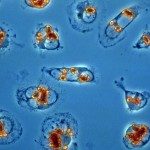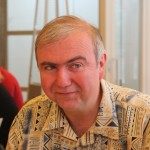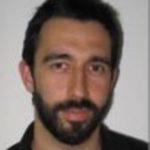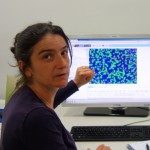Présentation
Our proposal aims to decipher novel subversion strategies used by Leishmania (i) to withstand, circumvent or inhibit anti-microbial activities of host macrophages and (ii) to interfere with the induction of Leishmania-specific immune responses. We will use well-established in vitro models of Leishmania-infected macrophages to study the regulatory mechanisms involved in the intramacrophagic survival of amastigotes with particular consideration for those connected with the inflammasome, a key player in regulating immunity. By combining complementary expertise established at Institut Pasteur Paris (IPP) in molecular parasitology applied to Leishmania and in vivo/in vitro study of host-Leishmania interactions, and Institut Pasteur Shanghai (IPS) in innate immunity and macrophage biology, we will investigate the reciprocal regulatory relationship between host cell inflammasome activation and intracellular Leishmania survival. Our ultimate goal is to discover new avenues to stimulate and rescue antimicrobial functions of infected macrophages to eliminate intracellular Leishmania parasites.
Objective 1: To investigate the reciprocal relationship between macrophage inflammasome activation and intracellular Leishmania survival
We will employ mice of different genetic backgrounds, including loss-of-function (LOF) and gain-of-function mouse (GOF) mutants for inflammasome components to study its activation state (i) in vitro in primary macrophages following contact and internalization of different developmental stages and species of Leishmania by quantifying inflammasome intracellular and secreted end-products in absence or presence of pro-inflammatory stimuli using biochemical, immunological and molecular methods, and (ii) in vivo following inoculation of Leishmania using state of the art immunohistological methods. This multi-disciplinary approach applied on established in vitro and in vivo infection models will allow important new insight into structure, activation, and function of multi-protein inflammasome complexes in Leishmania-hosting macrophages and infected tissues, and its impact on parasite survival and the immune-pathology of leishmaniasis.
Objective 2: To knock down macrophage genes involved in inflammasome in vitro by RNA interference and study the impact on Leishmania infection
We will first determine the best conditions for the transfection of rationally designed small interfering RNA (siRNA) and the effective silencing of GAPDH and Cyclophylin B control genes of mouse primary macrophages hosting amastigotes of the L. amazonensis species. Then, we will knock down the expression of selected essential macrophage genes known to be involved in the regulation of the inflammasome and/or the control of amastigote growth. Completion of this objective will reinforce essential information given through objective 1 and provide us with new insights into key inflammasome sensors, regulators or effectors involved in intramacrophagic amastigote survival and/or development.
Objective 3: To carry out in vitro RNA interference phenotypic screens on Leishmania-infected macrophages
Units 1, 2 and 3 will (i) develop a throughput capable siRNA screen in 384-well plate format based on a previously validated phenotypic assay, (ii) perform RNAi screening campaigns using small focused rationally designed siRNA libraries targeting genes regulating cellular responses or signaling pathways that may strongly impact the intracellular growth of amastigotes, including but not restricted to fatty acid, cholesterol and polyamine metabolism (iii) apply an off-target filtering procedure to confirm the involvement of selected genes, (iv) perform complementary siRNA experiments using individual or a combination of siRNA from customized small libraries encompassing multiple targets of selected pathways, and (v) study inflammasome representatives like activated caspase-1 and IL1beta secretion in presence of effective anti-leishmanial siRNA. This strategy will allow characterization of macrophage genes encoding molecules with potential anti-leishmanial activity or, on the contrary, that are exploited for intracellular parasite growth.
Coordinator
- Eric Prina, CR1 Unité de Parasitologie moléculaire et Signalisation, Institut Pasteur, Paris
Partners
- Guangxung MENG, Head of Innate Immunity Unit, Institut Pasteur Shanghai
- Spencer SHORTE, director Imagopole, Institut Pasteur, Paris
- Laurence FIETTE, Unité de Histopathologie humaine et modèles animaux, Institut Pasteur, Paris







